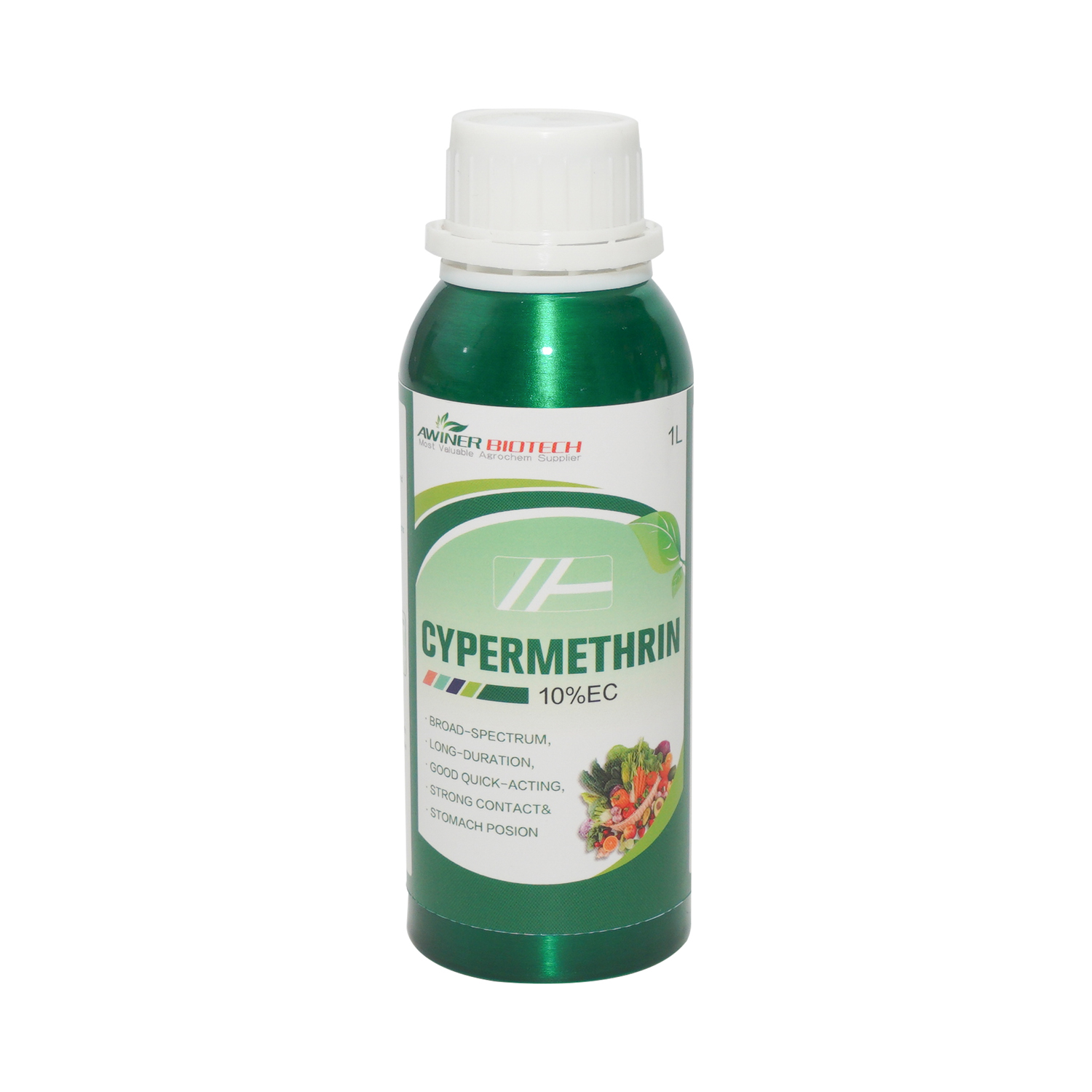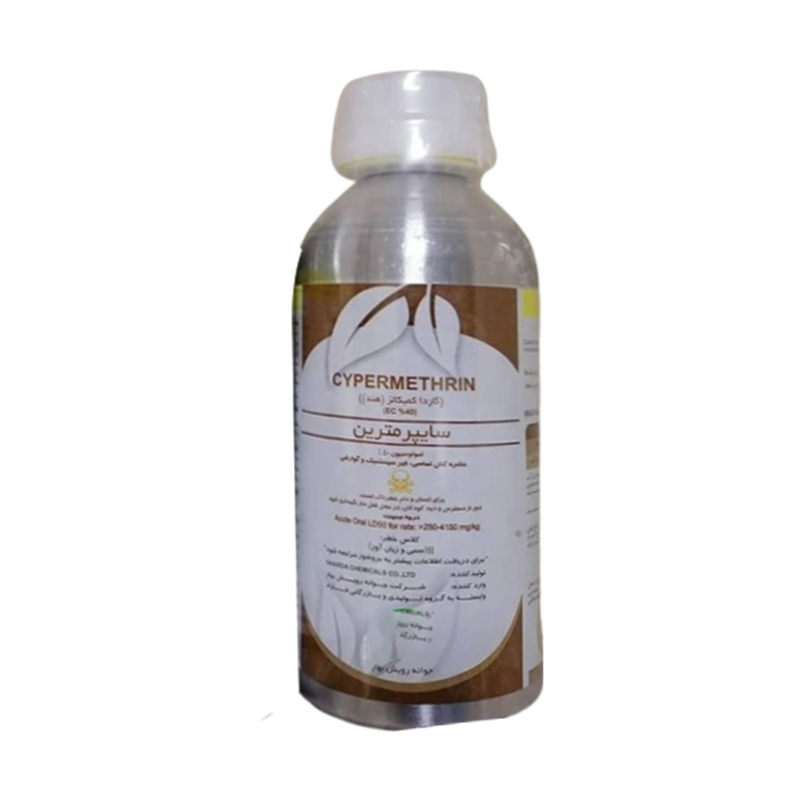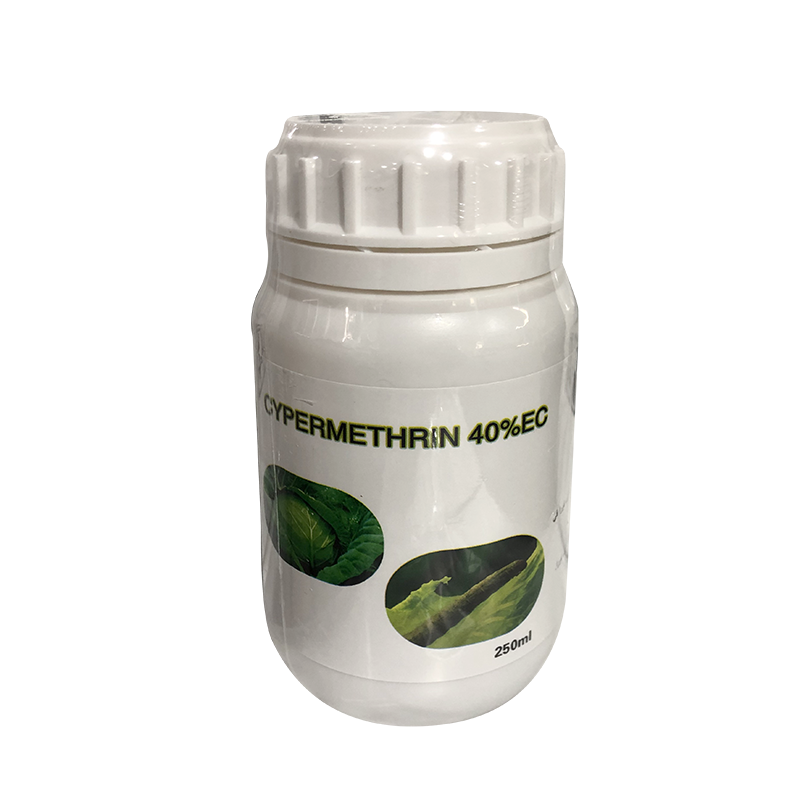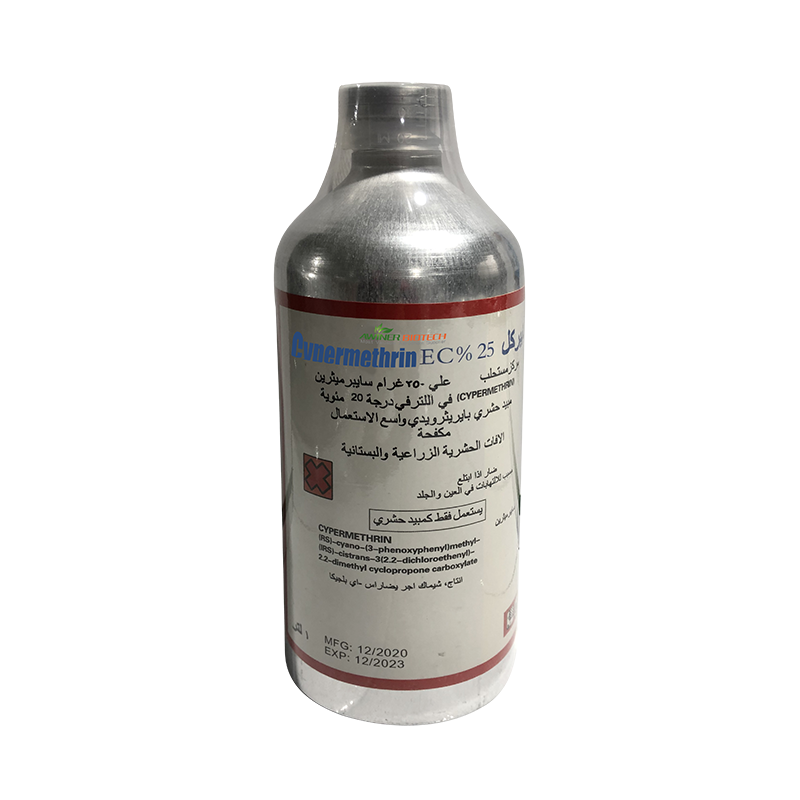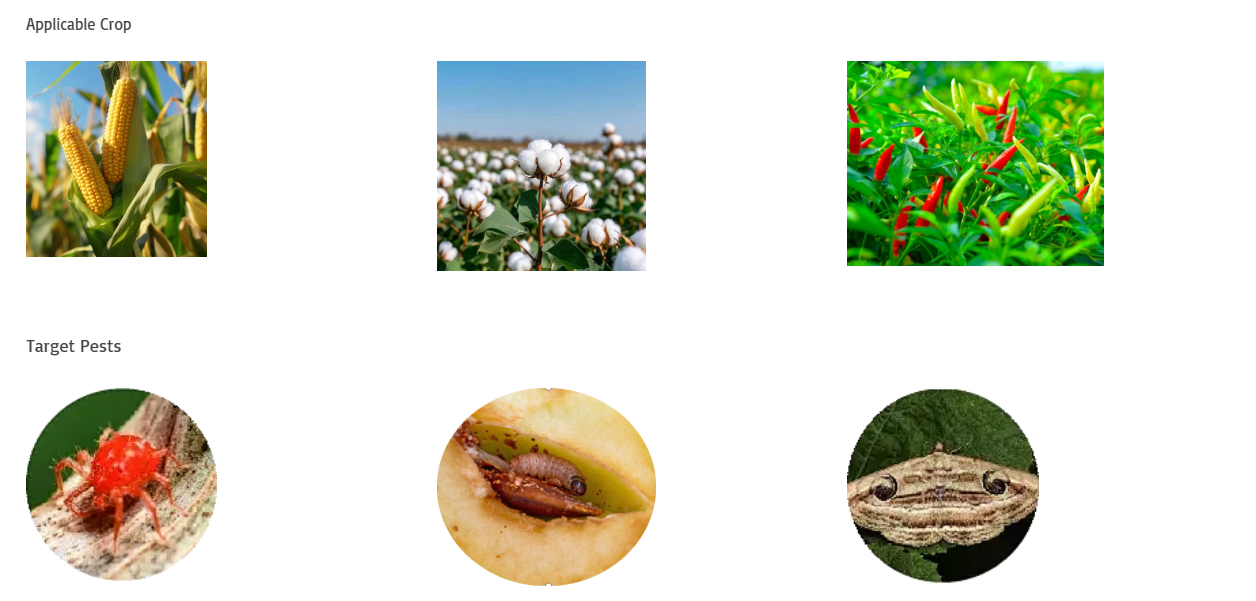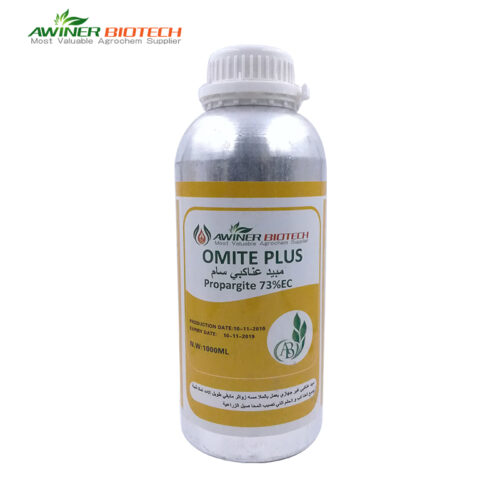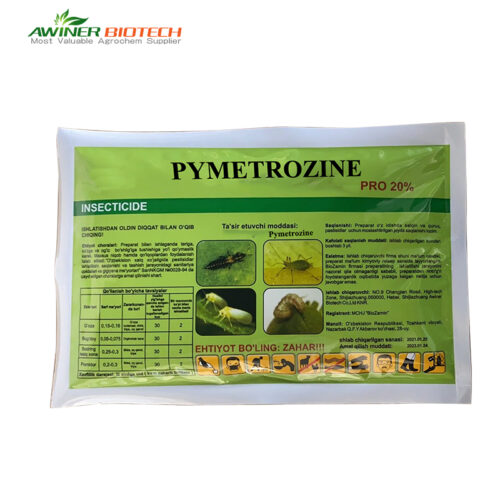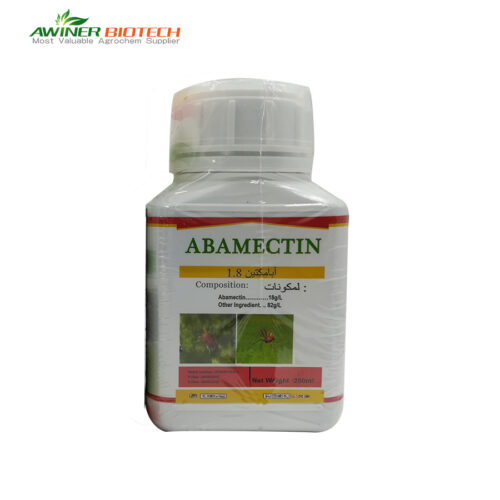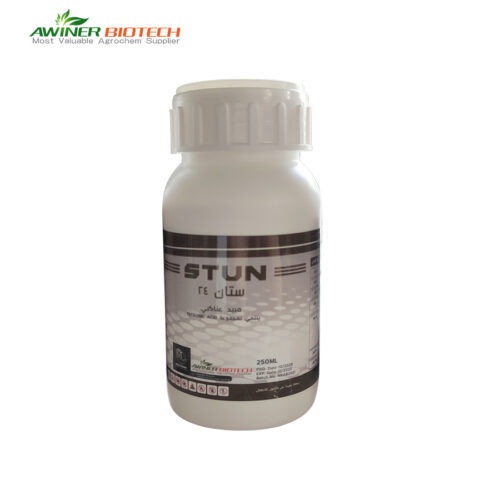pesticide insecticide Cypermethrin
Product Introduction
Awiner Biotech Cypermethrin is a broad-spectrum pyrethroid insecticide widely used in agriculture, horticulture, animal husbandry, and public health to control various chewing and piercing-sucking pests. As a synthetic pyrethroid, it is more stable and longer-lasting than natural pyrethroids, and is more resistant to light, heat, and air.
| Product Name | Cypermethrin |
| CAS Number | 52315-07-8 |
| Molecular Formula | C22H19Cl2NO3 |
| Brand Name | Awiner Biotech |
| Formulations | 5%EC,10%EC,10%WP,20%EC,25%EC,40%EC |
| Label and package | Customized |
Mode of action
Cypermethrin acts on the nervous system of insects by interfering with the normal function of voltage-gated sodium channels in nerve cell membranes. It keeps these channels open for an abnormally long time, causing continuous influx of sodium ions and repetitive nerve firing. This prolonged excitation disrupts nerve signal transmission, leading to hyperactivity, tremors, paralysis, and eventually death of the insect. Cypermethrin shows rapid knockdown effect, strong contact and stomach toxicity, and relatively low toxicity to mammals due to faster metabolism and lower sensitivity of their sodium channels.
It is widely used on cereal crops such as rice, wheat, maize, and sorghum to control planthoppers, stem borers, armyworms, and aphids. On cotton and other cash crops, it effectively manages bollworms, aphids, red spider mites, and leafhoppers. It is also suitable for vegetables including cabbage, tomato, eggplant, pepper, and potato to control aphids, thrips, and leaf-eating caterpillars. In fruit crops like apple, pear, peach, grape, and citrus, it helps manage codling moths and leafrollers. Additionally, Cypermethrin is used on soybean, peanut, rapeseed, tea, and forest trees to control various chewing and sucking pests.
Cypermethrin, as a pyrethroid insecticide targeting insect sodium channels, should be rotated with insecticides of different modes of action to prevent resistance. It can be alternated or combined with organophosphates (e.g., Dimethoate, DDVP), neonicotinoids (e.g., Imidacloprid, Thiamethoxam), carbamates (e.g., Carbaryl, Methomyl), insect growth regulators (e.g., Buprofezin), or other mechanistically distinct compounds such as Chlorantraniliprole. Avoid consecutive use of pyrethroids, and apply different classes based on crop type and pest occurrence to maintain efficacy and reduce resistance development.
Using Method
| Crop | Target Pests | Formulation | Dilution ratio | Application method | Interval |
| Cereal crops (Rice, Wheat, Maize) | Rice stem borers, planthoppers, aphids, maize borers | EC | 1:1000–1500 | Foliar spray, cover leaves and stems evenly | Every 10–14 days, 2–3 consecutive applications |
| Cotton, Cash crops (Cotton, Tobacco, Sugarcane) | Bollworms, red spider mites, aphids, whiteflies, tobacco caterpillars | EC | 1:800–1200 | Foliar spray, focus on upper and lower leaf surfaces | Every 7–10 days, avoid spraying during flowering |
| Vegetables (Cabbage, Tomato, Eggplant, Pepper, Potato) | Cabbage worms, armyworms, diamondback moths, aphids, thrips, spider mites | EC | 1:1000–1500 | Whole-plant foliar spray, ensure coverage of leaf undersides | Every 7–10 days |
| Fruit trees (Apple, Peach, Grape, Citrus) | Leafrollers, codling moths, mites | EC | 1:1000 | Foliar spray, focus around fruits | Every 10–14 days, avoid flowering period |
| Legumes & Oil crops (Soybean, Peanut, Rapeseed) | Pod borers, armyworms, aphids, leafhoppers | EC | 1:1000–1500 | Foliar spray, focus on buds, leaves, and pods | Every 7–10 days, 2–3 consecutive applications |
| Tea & Forestry (Tea, Forest trees) | Tea green leafhoppers, tea caterpillars, tea loopers, longhorn beetles | EC | 1:800–1200 | Foliar spray or high-pressure mist, cover entire plant | Every 10–14 days |
Precautions
- Environmental Safety
This product is highly toxic to bees and other beneficial insects,avoid spraying during flowering.
This product is highly toxic to aquatic life, do not use near water bodies or water sources.
Avoid spraying in windy conditions to prevent drift and contamination. - Crop and Application Management
Strictly follow local recommended dosage and dilution rates; never overuse or under-dilute.
Rotate pesticides with different modes of action to prevent the development of pesticide resistance.
Avoid spraying in strong sunlight or high temperatures to reduce evaporation and degradation. - Pre-harvest Interval
Adhere to the recommended pre-harvest interval (usually 7-14 days) to ensure crop safety.
In livestock areas, prevent animals from coming into contact with treated areas. - Personal Protection
When handling or spraying, always wear protective gloves, a mask, and goggles.
Avoid direct contact with skin or eyes, as well as inhalation.
Wash hands and exposed areas thoroughly after spraying. - Storage and Transportation
Store in a cool, dry, well-ventilated place away from food and feed.
Avoid high temperatures, direct sunlight, and open flames.
Keep out of reach of children.

